- No products in the cart.
Losartan canon tab p / 50 mg of the film 30 pc
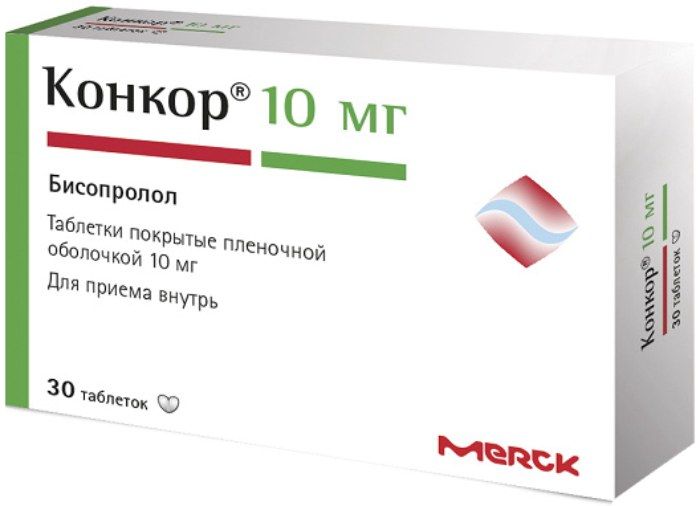
Concor tab p / 10 mg of the film 30 pc
$6.11
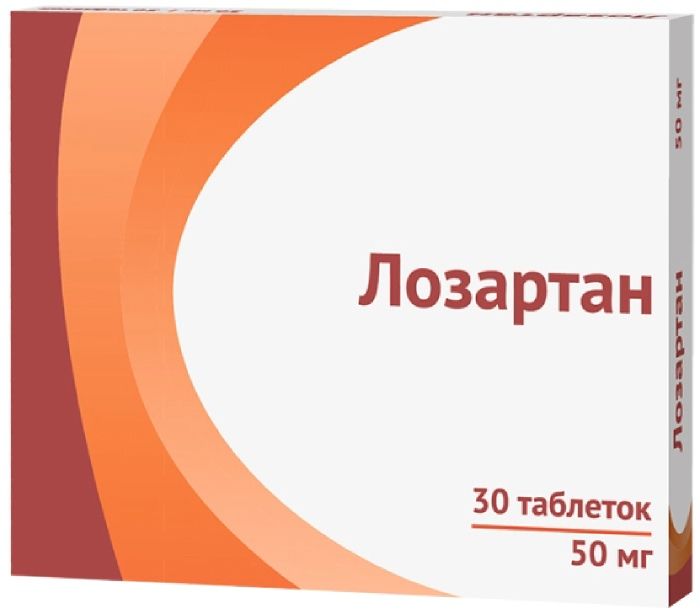
Losartan tab n / 50mg film about 30 pieces of ozone
$3.03
$3.19
Losartan canon tab p / 50 mg of the film 30 pc
SKU: 0560861344 Categories: Heart and blood vessels, High pressure, Medicaments Tags: KANONFARMA, losartan
Description
Composition
Active substance:
1 tablet contains: Losartan potassium 50 mg or 100 mg.
Excipients:
Corn starch, croscarmellose sodium, mannitol, magnesium stearate, povidone, microcrystalline cellulose; film coating: Opadry White, including: hypromellose (hydroxypropylmethylcellulose), giproloza (hydroxypropyl-cellulose), talc, titanium dioxide.
Description:
The tablets are round, biconvex, film-coated white or nearly white. The cross-sectional view – almost white color.
Product form:
Tablets, film-coated, 50 mg and 100 mg.
At 7, 10, 28 or 30 tablets in blisters of PVC film and aluminum foil printed patent.
1, 2, 4 blisters of 7 tablets or 1, 3, 6 contour cell packs of 10 pills, or 1, 2 blisters 28 tablets, or 1, 2, 3 blisters of 30 tablets together with instructions for use placed in a pile of cardboard.
Contraindications
Hypersensitivity to the active agent or other components of the preparation.
Hypotension.
Severe hepatic insufficiency (more than 9 points on a scale Child-Pugh).
Primary aldosteronism.
The simultaneous use of aliskiren in patients with diabetes and with renal failure (creatinine clearance less than 60 mL / min).
Pregnancy, lactation.
Age 18 years (effectiveness and safety have been established).
Carefully
Disruption of water and electrolyte balance of the blood (hyponatremia, gipohloremichesky alkalosis, hypomagnesemia, hypokalemia, hyperkalemia).
Reduced blood volume (CBV).
Bilateral renal artery stenosis or stenosis of the artery to a solitary kidney, renal insufficiency.
Condition after kidney transplantation (lack of application experience).
Aortic and mitral stenosis, hypertrophic obstructive cardiomyopathy, cardiac insufficiency with concomitant severe renal insufficiency, severe chronic heart failure (IV functional class NYHA classification), heart failure, life-threatening arrhythmias, ischemic heart disease.
Cerebrovascular disease.
Liver failure (less than 9 points on the Child-Pugh).
Angioedema history.
Dosage
50 mg
Indications
Arterial hypertension.
Reducing the risk of cardiovascular disease and mortality in patients with hypertension and left ventricular hypertrophy.
Chronic heart failure (in a combination therapy inefficiency or intolerance to ACE inhibitor therapy).
In patients with type 2 diabetes mellitus with proteinuria to slow the progression of kidney failure, a decrease in frequency is manifested hypercreatininemia, the incidence of end-stage renal failure requiring dialysis or kidney transplantation, mortality rates, and reduced proteinuria.
Interaction with other drugs
It may be used concomitantly with other antihypertensive agents.
There was no any clinically relevant drug-drug interaction of losartan with hydrochlorothiazide, digoxin, warfarin, cimetidine, phenobarbital, ketoconazole and erythromycin. According to rifampicin and fluconazole reduces the concentration of the active metabolite in the blood plasma. The clinical significance of these interactions is unknown.
As with other means of blocking the formation of angiotensin II and its effects, concomitant administration of potassium-sparing diuretics (spironolactone, triamterene, amiloride), potassium supplements and salts containing potassium, may increase the content of potassium ions in serum.
Antihypertensives may increase the antihypertensive effect of losartan.
Also amplify antihypertensive effect of losartan may tricyclic antidepressants, antipsychotics, baclofen, amifostine, which lower blood pressure in a main or side effect and may increase the risk of hypotension.
With simultaneous use of the angiotensin II receptor antagonists and non-steroidal anti-inflammatory drugs (NSAIDs) (including selective cyclooxygenase-2 inhibitors, acetylsalicylic acid as an anti-inflammatory agent) can be reduced antihypertensive effect of losartan. Patients with impaired renal function, the simultaneous use of the angiotensin II antagonists or diuretics and NSAIDs can cause further deterioration of renal function, including acute renal failure and increase in potassium in serum. This combination should be used with caution, especially in elderly patients.
With simultaneous use of lithium with ACE inhibitors reversible increases lithium concentrations have been reported in the serum and the development of toxicity; In very rare cases, this occurred when using angiotensin II receptor antagonists. With simultaneous use of lithium losartan with caution. If the combination is necessary, it is recommended to monitor the concentration of lithium in blood serum.
Mutually reinforces the effect of beta-blockers and sympatholytic; the combined use of losartan with a diuretic causes an additive effect.
Dual blockade of the RAAS (e.g., by combining an angiotensin II receptor with ACE inhibitors or aliskiren) in patients with an established diagnosis of atherosclerosis, cardiac insufficiency, or diabetes mellitus with lesions target organs associated with a higher incidence of arterial hypotension, syncope, hyperkalemia, and dysfunction kidney (including the development of acute renal failure) as compared to using a single-component blockade of the RAAS. The question of the application of double RAAS blockade must be resolved in each case individually and with careful monitoring of blood pressure, fluid and electrolyte balance of the blood and kidney function.
Overdose
Symptoms: marked decrease in blood pressure (BP), and tachycardia. Bradycardia can occur due to parasympathetic (vagal) stimulation.
Treatment: forced diuresis, symptomatic therapy. Hemodialysis is not effective.
pharmachologic effect
Pharmacological group:
Angiotensin II receptor antagonist.
Pharmacodynamics:
Angiotensin II is a potent vasoconstrictor, mainly active hormone of the renin-angiotensin-aldosterone system (RAAS), as well as the decisive pathophysiological link in the development of hypertension. Losartan highly ingestion selective antagonist of angiotensin II receptor (AT1 type). Angiotensin II binds selectively to the AT1 receptor found in many tissues (smooth muscle tissues of the vessels, the adrenal glands, the kidneys and the heart) and performs several important biological functions, including vasoconstriction and the release of aldosterone. In addition, angiotensin II stimulates the proliferation of smooth muscle cells. Losartan and its pharmacologically active metabolite (E-3174), both in vitro and in vivo, blocking all physiological effects of angiotensin II, regardless of the source or synthetic route. Unlike some peptide antagonists of angiotensin II, losartan has no agonist effects.
Losartan binds selectively to the AT1 receptor and does not bind to or block other hormone receptors and ion channels, which play an important role in the regulation of the cardiovascular system (CVS). Furthermore, losartan does not inhibit the angiotensin converting enzyme (ACE) responsible for the degradation of bradykinin. Consequently, effects not directly related to the blockade of AT1 receptors, including bradykinin-mediated effects and development of peripheral edema (losartan – 1.7%, placebo – 1.9%), are not related to the action of losartan.
, Decreases total peripheral vascular resistance (SVR) concentration in the blood norepinephrine and aldosterone blood pressure (BP) pressure in the “small” systemic circulation; reducing afterload, it has diuretic effect. Prevents the development of cardiac hypertrophy, increases exercise tolerance in patients with chronic heart failure (CHF). When losartan inwardly increases plasma renin activity (RPA), which leads to an increase in the content of angiotensin II in plasma. After a single dose antihypertensive effect (reduced systolic and diastolic blood pressure) reaches a maximum after 6 hours then for 24 hours gradually decreases. In the treatment of antihypertensive activity and a decrease in plasma aldosterone concentration manifested after 2 and 6 weeks of treatment, indicating that effective blockade of angiotensin II receptors. However, after replacing losartan plasma renin activity and levels of angiotensin II after 3 days decreased to baseline values observed prior to ingestion.
And losartan and its active metabolite has a higher affinity for receptors of the AT1 than AT2 receptor type. The active metabolite is 10-40 times more active than losartan.
Pharmacokinetics:
Suction
When administered losartan is well absorbed from the gastrointestinal tract (GIT) and thus undergoes metabolism at “primary pass” through the liver by carboxylation involving CYP2C9 isozyme to form the active metabolite.
Systemic bioavailability of losartan is approximately 33%. Maximum concentration of losartan and its active metabolite are achieved in the blood serum after about 1 hour, 3-4 hours after oral administration, respectively. Eating does not affect the bioavailability of losartan.
Distribution
Losartan and its active metabolite is bound to plasma proteins (mainly albumin) is greater than 99%. The volume of distribution of losartan is 34 liters. Losartan practically does not penetrate the blood-brain barrier (BBB).
Metabolism
Approximately 14% of the dose of losartan administered intravenously or by mouth, is converted into its active metabolite. After oral or intravenous administration of 14C-labeled carbon losartan, circulating plasma radioactivity caused by the presence of losartan and its active metabolite. In addition to the active metabolite biologically inactive metabolites are formed, including two major resulting from hydroxylation of the butyl side chain, and one minor – N-2-tetrazol-glucuronide.
breeding
Plasma clearance of losartan and its active metabolite is about 600 ml / min and 50 ml / min, respectively. Renal clearance of losartan and its active metabolite is about 74 ml / min and 26 ml / min, respectively. When losartan inwardly about 4% of the dose is excreted unchanged by the kidneys, and about 6% of the dose excreted by the kidneys as an active metabolite. Losartan and its active metabolite exhibit linear pharmacokinetics when administered at doses up to 200 mg.
After oral administration, plasma concentrations of losartan and its active metabolite polieksponentsialno reduced with a finite half-life of approximately 2 and 9.6 hours, respectively. When the drug dosing regimen of 100 mg once a day is no significant accumulation in the blood plasma nor losartan or an active metabolite thereof.
Excretion losartan and its metabolites occurs through the intestine in bile and kidney. After oral administration of 14C-labeled carbon losartan about 35% of the radioactivity found in urine and 58% in feces. After intravenous administration of 14C-labeled carbon losartan about 43% of the radioactivity detected in urine and 50% in feces.
Pharmacokinetics in special patient groups
Elderly patients: concentrations of losartan and its active metabolite in the blood plasma of elderly male patients with hypertension did not differ significantly from the values of these parameters in male patients younger people with hypertension.
Gender: the values of plasma concentrations of losartan in hypertensive women in 2 times higher than the corresponding values in men with hypertension. The concentrations of the active metabolite in both men and women did not differ. This apparent pharmacokinetic difference, however, is of no clinical significance.
Patients with impaired liver function: when losartan into patients with mild to moderate alcoholic cirrhosis of the liver, concentrations of losartan and its active metabolite in plasma were 5 and 1.7 times, respectively, higher than in young healthy male volunteers.
Patients with impaired renal function: plasma concentrations of losartan in patients with creatinine clearance (CC) higher than 10 ml / min did not differ from those in patients with renal function unchanged. When comparing the area under the curve “concentration-time» (AUC) in patients with normal renal function, AUC losartan in patients on hemodialysis was approximately 2 times more. Plasma concentrations of the active metabolite is not changed in patients with impaired renal function or in hemodialysis. Losartan and its active metabolite are output via hemodialysis.
Pregnancy and breast-feeding
The drug Losartan Canon is contraindicated in pregnancy. The degree of risk to the fetus in trimester I below in comparison with trimesters II-III as renal perfusion of the fetus depending on the renin-angiotensin-aldosterone system (RAAS), appears in II trimester.
In the I trimester drug Losartan Canon is not recommended. However, in those extremely rare cases (less than one woman out of thousands), when the use of other antihypertensive agents can not be allowed use of the drug under careful medical supervision, including weekly ultrasound examination of the fetus. In the case of detecting signs of oligohydramnios treatment angiotensin II receptor antagonist should be discontinued.
Use of an angiotensin II receptor antagonist in the II or III trimester of pregnancy has toxic effects on the fetus (decreased renal function, oligohydramnios development retardation ossification of bones of the skull) and newborn (renal failure, hypotension, hyperkalaemia).
Since the drugs acting on the RAAS, in II-III trimesters of pregnancy can disrupt the development and / or death of the fetus, should be discontinued immediately if the fact of pregnancy the drug Losartan Canon.
For newborns and infants in utero are exposed to angiotensin II receptor antagonist, should be closely monitored for early detection of significant decrease in blood pressure, oliguria, hyperkalemia.
It is not known whether losartan is released in breast milk, so the drug Losartan Canon is contraindicated during lactation. If necessary, the drug should discontinue breastfeeding.
Conditions of supply of pharmacies
Prescription.
side effects
Classification of the WHO frequency of side effects: very often> 1/10 assignments (> 10%) often by> 1/100 to 1%, and
special instructions
In patients with reduced BCC (eg, receiving high doses of diuretics) can cause symptomatic hypotension, so prior to treatment you need to fill the bcc or begin treatment with Losartan Canon at a lower dose.
Patients with cirrhosis losartan plasma concentration is significantly increased, and therefore the presence of liver diseases in history should be administered in lower doses.
The treatment should regularly monitor the content of potassium in the blood and plasma creatinine clearance, particularly in elderly patients, patients with impaired kidney function, patients with type 2 diabetes mellitus complicated nephropathy; and particular care should monitor these indicators in patients with heart failure with a concomitant renal impairment.
Drugs that affect the RAAS may increase the concentration of urea in the blood and serum creatinine in patients with bilateral renal stenosis or stenosis of the artery to a solitary kidney.
Experience in the application of losartan in patients after kidney transplantation there.
In patients with severe chronic heart failure drugs that affect the RAAS can cause severe hypotension and acute renal failure. There are some reports about the development of oliguria and / or progressive azotemia and acute renal failure, including fatal.
There is not enough experience with losartan in heart failure patients with concomitant severe renal impairment, in patients with severe chronic heart failure (IV functional class NYHA classification), in patients with heart failure, life-threatening arrhythmias. In these groups, with the caution should be used drug Losartan Canon with beta-blockers.
As with all drugs with vasodilating action, drug Losartan Canon should be used with caution in patients with aortic or mitral stenosis, obstructive or hypertrophic cardiomyopathy.
In patients with ischemic cerebrovascular disease character of an excessive fall in blood pressure can lead to stroke. Recommended medical supervision during dose titration.
Caution must be exercised when administering the drug Losartan Canon patients with a history of which instructions were transferred to angioedema, including the reception of other drugs, including ACE inhibitors.
Пациенты с первичным гиперальдостеронизмом обычно не реагируют на гипотензивные средства, действующие через ингибирование ренин-ангиотензиновой системы. Поэтому не рекомендуется применять препарат Лозартан Канон для лечения таких пациентов.
The effect on the ability of control of vehicles and mechanisms
Не проводилось исследований для оценки влияния препарата на управление транспортными средствами и механизмами.
Следует иметь в виду возможность появления сонливости и головокружения, поэтому необходимо соблюдать осторожность при выполнении работ, требующих повышенного внимания, особенно в начале лечения, при повышении дозы препарата и при управлении транспортными средствами.
Storage conditions
Store in a dry, dark place at a temperature not higher than 25 C.
Keep out of the reach of children.
Dosing and Administration
Inside, regardless of the meal. Таблетки проглатывают, не разжевывая, запивая водой. Кратность приема – 1 раз/сутки, желательно в одно и то же время, утром.
Arterial hypertension
Начальная и поддерживающая доза составляет 50 мг/сутки. При необходимости суточная доза может быть увеличена до максимальной 100 мг. Если однократный прием препарата не обеспечивает целевого значения уровня АД, суточную дозу следует разделить на 2 приема: по 25 мг (возможно применение лозартана в таблетках 25 мг или в таблетках 50 мг с риской) 2 раза в сутки или по 50 мг 2 раза в сутки.
Снижение риска развития сердечно-сосудистых заболеваний и смертности у пациентов с артериальной гипертензией и гипертрофией левого желудочка
Начальная доза препарата составляет 50 мг 1 раз/сутки. В дальнейшем может быть добавлен гидрохлоротиазид в низких дозах или увеличена доза препарата Лозартан Канон до максимальной 100 мг в один или два приема с учетом снижения АД.
Chronic heart failure
Начальная доза для пациентов с хронической сердечной недостаточностью составляет 12,5 мг (возможно применение лозартана в таблетках по 25 мг с риской) 1 раз/сутки. Доза титруется 2 раза, в зависимости от переносимости препарата пациентом, с недельным интервалом, т.е. 12,5 мг/сут, 25 мг/сут, 50 мг/сут до средней поддерживающей дозы 50 мг/сут. У пациентов пожилого возраста с почечной недостаточностью коррекция дозы не требуется.
У пациентов с сахарным диабетом 2 типа с протеинурией для замедления прогрессирования почечной недостаточности
Начальная доза составляет 50 мг 1 раз/сутки с дальнейшим повышением дозы до максимальной 100 мг/сутки (с учетом степени снижения АД) в один или в два приема.
Special patient groups
У пациентов со сниженным объемом циркулирующей крови (ОЦК) (например, при приеме диуретиков в высоких дозах) рекомендуемая начальная доза препарата Лозартан Канон составляет 25 мг (возможно применение лозартана в таблетках 25 мг или в таблетках 50 мг с риской).
Пациентам с печеночной недостаточностью (менее 9 баллов по шкале Чайлд-Пью), при проведении процедуры гемодиализа, а также пациентам старше 75 лет рекомендуется более низкая начальная доза препарата 25 мг (возможно применение лозартана в таблетках 25 мг или в таблетках 50 мг с риской) 1 раз в сутки.
Недостаточно опыта применения препарата у пациентов с тяжелой печеночной недостаточностью, поэтому препарат не рекомендован у данной категории пациентов (см. раздел «Противопоказания»).
У пациентов с умеренным нарушением функции почек (КК 20-30 мл/мин) коррекция дозы не требуется.
Information
Appearance may differ from that depicted in the picture. There are contraindications. You need to read the manual or consult with a specialist
Additional information
| Weight | 0.100 kg |
|---|---|
| Manufacturer | KANONFARMA |

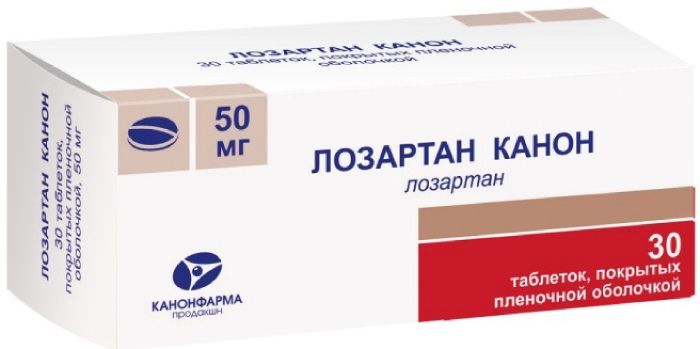
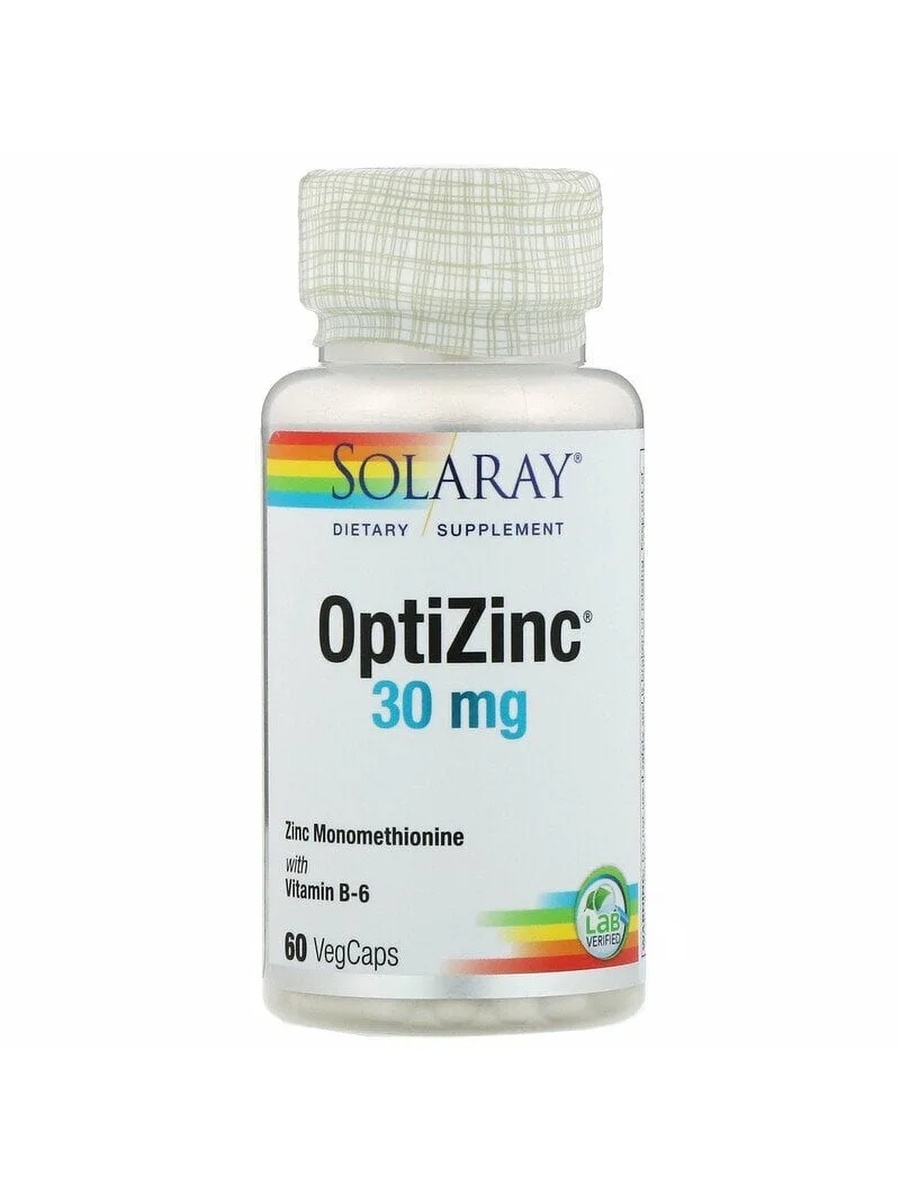



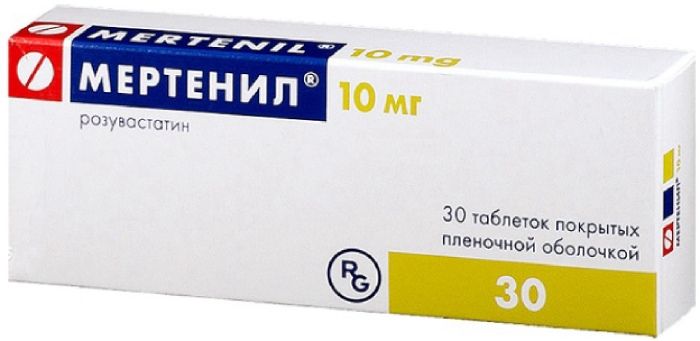





There are no reviews yet.